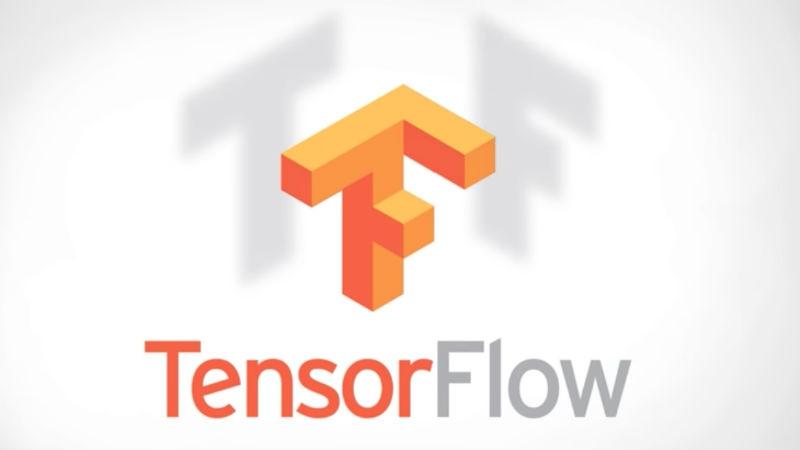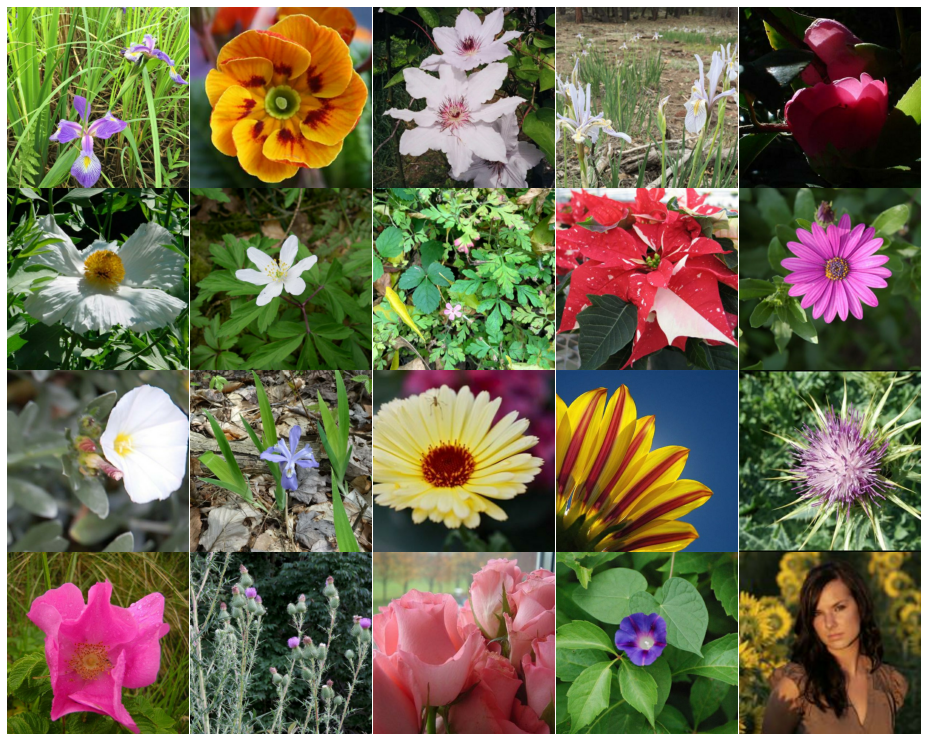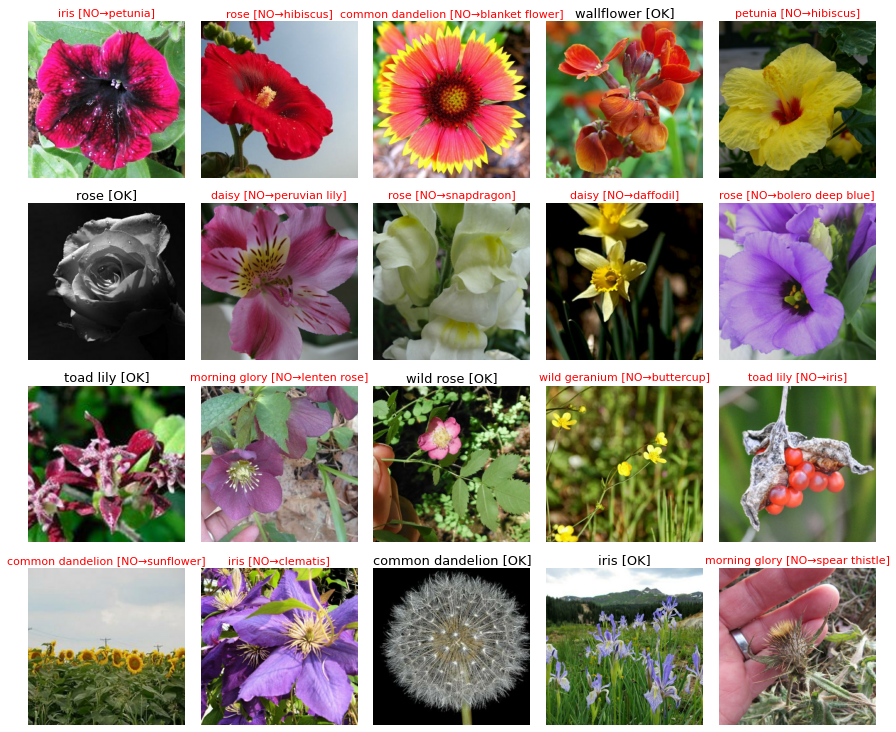TPU Tutorial
https://www.kaggle.com/kimbumso/getting-started-with-100-flowers-on-tpu

이탤릭 볼드 이탤릭볼드
Workflow stages
- Question or problem definition.
- Acquire training and testing data.
- Wrangle, prepare, cleanse the data.
- Analyze, identify patterns, and explore the data.
- Model, predict and solve the problem.
- Visualize, report, and present the problem solving steps and final solution.
- Supply or submit the results.
기본적으로 설치되어 있어야하는 패키지는 아래 코드 를 사용한다.
import math, re, os
import tensorflow as tf
import numpy as np
from matplotlib import pyplot as plt
from kaggle_datasets import KaggleDatasets
from sklearn.metrics import f1_score, precision_score, recall_score, confusion_matrix
print("Tensorflow version " + tf.__version__)
AUTO = tf.data.experimental.AUTOTUNE
TPU or GPU detection
# Detect hardware, return appropriate distribution strategy
try:
tpu = tf.distribute.cluster_resolver.TPUClusterResolver() # TPU detection. No parameters necessary if TPU_NAME environment variable is set. On Kaggle this is always the case.
print('Running on TPU ', tpu.master())
except ValueError:
tpu = None
if tpu:
tf.config.experimental_connect_to_cluster(tpu)
tf.tpu.experimental.initialize_tpu_system(tpu)
strategy = tf.distribute.experimental.TPUStrategy(tpu)
else:
strategy = tf.distribute.get_strategy() # default distribution strategy in Tensorflow. Works on CPU and single GPU.
print("REPLICAS: ", strategy.num_replicas_in_sync)
Competition data access
TPUs read data directly from Google Cloud Storage (GCS). This Kaggle utility will copy the dataset to a GCS bucket co-located with the TPU. If you have multiple datasets attached to the notebook, you can pass the name of a specific dataset to the get_gcs_path function. The name of the dataset is the name of the directory it is mounted in. Use !ls /kaggle/input/ to list attached datasets.
GCP 버킷 접근
!git clone https://github.com/GoogleCloudPlatform/gcsfuse.git
!echo "deb http://packages.cloud.google.com/apt gcsfuse-bionic main" > /etc/apt/sources.list.d/gcsfuse.list
!curl https://packages.cloud.google.com/apt/doc/apt-key.gpg | apt-key add -
!apt -qq update
!apt -qq install gcsfuse
GCP Bucket 연동
GCS_DS_PATH = KaggleDatasets().get_gcs_path() # you can list the bucket with "!gsutil ls $GCS_DS_PATH"
# Configuration
IMAGE_SIZE = [512, 512] # At this size, a GPU will run out of memory. Use the TPU.
# For GPU training, please select 224 x 224 px image size.
EPOCHS = 12
BATCH_SIZE = 16 * strategy.num_replicas_in_sync
GCS_PATH_SELECT = { # available image sizes
192: GCS_DS_PATH + '/tfrecords-jpeg-192x192',
224: GCS_DS_PATH + '/tfrecords-jpeg-224x224',
331: GCS_DS_PATH + '/tfrecords-jpeg-331x331',
512: GCS_DS_PATH + '/tfrecords-jpeg-512x512'
}
GCS_PATH = GCS_PATH_SELECT[IMAGE_SIZE[0]]
TRAINING_FILENAMES = tf.io.gfile.glob(GCS_PATH + '/train/*.tfrec')
VALIDATION_FILENAMES = tf.io.gfile.glob(GCS_PATH + '/val/*.tfrec')
TEST_FILENAMES = tf.io.gfile.glob(GCS_PATH + '/test/*.tfrec') # predictions on this dataset should be submitted for the competition
CLASSES = ['pink primrose', 'hard-leaved pocket orchid', 'canterbury bells', 'sweet pea', 'wild geranium', 'tiger lily', 'moon orchid', 'bird of paradise', 'monkshood', 'globe thistle', # 00 - 09
'snapdragon', "colt's foot", 'king protea', 'spear thistle', 'yellow iris', 'globe-flower', 'purple coneflower', 'peruvian lily', 'balloon flower', 'giant white arum lily', # 10 - 19
'fire lily', 'pincushion flower', 'fritillary', 'red ginger', 'grape hyacinth', 'corn poppy', 'prince of wales feathers', 'stemless gentian', 'artichoke', 'sweet william', # 20 - 29
'carnation', 'garden phlox', 'love in the mist', 'cosmos', 'alpine sea holly', 'ruby-lipped cattleya', 'cape flower', 'great masterwort', 'siam tulip', 'lenten rose', # 30 - 39
'barberton daisy', 'daffodil', 'sword lily', 'poinsettia', 'bolero deep blue', 'wallflower', 'marigold', 'buttercup', 'daisy', 'common dandelion', # 40 - 49
'petunia', 'wild pansy', 'primula', 'sunflower', 'lilac hibiscus', 'bishop of llandaff', 'gaura', 'geranium', 'orange dahlia', 'pink-yellow dahlia', # 50 - 59
'cautleya spicata', 'japanese anemone', 'black-eyed susan', 'silverbush', 'californian poppy', 'osteospermum', 'spring crocus', 'iris', 'windflower', 'tree poppy', # 60 - 69
'gazania', 'azalea', 'water lily', 'rose', 'thorn apple', 'morning glory', 'passion flower', 'lotus', 'toad lily', 'anthurium', # 70 - 79
'frangipani', 'clematis', 'hibiscus', 'columbine', 'desert-rose', 'tree mallow', 'magnolia', 'cyclamen ', 'watercress', 'canna lily', # 80 - 89
'hippeastrum ', 'bee balm', 'pink quill', 'foxglove', 'bougainvillea', 'camellia', 'mallow', 'mexican petunia', 'bromelia', 'blanket flower', # 90 - 99
'trumpet creeper', 'blackberry lily', 'common tulip', 'wild rose'] # 100 - 102
Visualization utilities
data -> pixels, nothing of much interest for the machine learning practitioner in this section.
# numpy and matplotlib defaults
np.set_printoptions(threshold=15, linewidth=80)
def batch_to_numpy_images_and_labels(data):
images, labels = data
numpy_images = images.numpy()
numpy_labels = labels.numpy()
if numpy_labels.dtype == object: # binary string in this case, these are image ID strings
numpy_labels = [None for _ in enumerate(numpy_images)]
# If no labels, only image IDs, return None for labels (this is the case for test data)
return numpy_images, numpy_labels
def title_from_label_and_target(label, correct_label):
if correct_label is None:
return CLASSES[label], True
correct = (label == correct_label)
return "{} [{}{}{}]".format(CLASSES[label], 'OK' if correct else 'NO', u"\u2192" if not correct else '',
CLASSES[correct_label] if not correct else ''), correct
def display_one_flower(image, title, subplot, red=False, titlesize=16):
plt.subplot(*subplot)
plt.axis('off')
plt.imshow(image)
if len(title) > 0:
plt.title(title, fontsize=int(titlesize) if not red else int(titlesize/1.2), color='red' if red else 'black', fontdict={'verticalalignment':'center'}, pad=int(titlesize/1.5))
return (subplot[0], subplot[1], subplot[2]+1)
def display_batch_of_images(databatch, predictions=None):
"""This will work with:
display_batch_of_images(images)
display_batch_of_images(images, predictions)
display_batch_of_images((images, labels))
display_batch_of_images((images, labels), predictions)
"""
# data
images, labels = batch_to_numpy_images_and_labels(databatch)
if labels is None:
labels = [None for _ in enumerate(images)]
# auto-squaring: this will drop data that does not fit into square or square-ish rectangle
rows = int(math.sqrt(len(images)))
cols = len(images)//rows
# size and spacing
FIGSIZE = 13.0
SPACING = 0.1
subplot=(rows,cols,1)
if rows < cols:
plt.figure(figsize=(FIGSIZE,FIGSIZE/cols*rows))
else:
plt.figure(figsize=(FIGSIZE/rows*cols,FIGSIZE))
# display
for i, (image, label) in enumerate(zip(images[:rows*cols], labels[:rows*cols])):
title = '' if label is None else CLASSES[label]
correct = True
if predictions is not None:
title, correct = title_from_label_and_target(predictions[i], label)
dynamic_titlesize = FIGSIZE*SPACING/max(rows,cols)*40+3 # magic formula tested to work from 1x1 to 10x10 images
subplot = display_one_flower(image, title, subplot, not correct, titlesize=dynamic_titlesize)
#layout
plt.tight_layout()
if label is None and predictions is None:
plt.subplots_adjust(wspace=0, hspace=0)
else:
plt.subplots_adjust(wspace=SPACING, hspace=SPACING)
plt.show()
def display_confusion_matrix(cmat, score, precision, recall):
plt.figure(figsize=(15,15))
ax = plt.gca()
ax.matshow(cmat, cmap='Reds')
ax.set_xticks(range(len(CLASSES)))
ax.set_xticklabels(CLASSES, fontdict={'fontsize': 7})
plt.setp(ax.get_xticklabels(), rotation=45, ha="left", rotation_mode="anchor")
ax.set_yticks(range(len(CLASSES)))
ax.set_yticklabels(CLASSES, fontdict={'fontsize': 7})
plt.setp(ax.get_yticklabels(), rotation=45, ha="right", rotation_mode="anchor")
titlestring = ""
if score is not None:
titlestring += 'f1 = {:.3f} '.format(score)
if precision is not None:
titlestring += '\nprecision = {:.3f} '.format(precision)
if recall is not None:
titlestring += '\nrecall = {:.3f} '.format(recall)
if len(titlestring) > 0:
ax.text(101, 1, titlestring, fontdict={'fontsize': 18, 'horizontalalignment':'right', 'verticalalignment':'top', 'color':'#804040'})
plt.show()
def display_training_curves(training, validation, title, subplot):
if subplot%10==1: # set up the subplots on the first call
plt.subplots(figsize=(10,10), facecolor='#F0F0F0')
plt.tight_layout()
ax = plt.subplot(subplot)
ax.set_facecolor('#F8F8F8')
ax.plot(training)
ax.plot(validation)
ax.set_title('model '+ title)
ax.set_ylabel(title)
#ax.set_ylim(0.28,1.05)
ax.set_xlabel('epoch')
ax.legend(['train', 'valid.'])
데이터셋
def decode_image(image_data):
image = tf.image.decode_jpeg(image_data, channels=3)
image = tf.cast(image, tf.float32) / 255.0 # convert image to floats in [0, 1] range 정규화
image = tf.reshape(image, [*IMAGE_SIZE, 3]) # explicit size needed for TPU
return image
def read_labeled_tfrecord(example):
LABELED_TFREC_FORMAT = {
"image": tf.io.FixedLenFeature([], tf.string), # tf.string means bytestring
"class": tf.io.FixedLenFeature([], tf.int64), # shape [] means single element
}
example = tf.io.parse_single_example(example, LABELED_TFREC_FORMAT)
image = decode_image(example['image'])
label = tf.cast(example['class'], tf.int32)
return image, label # returns a dataset of (image, label) pairs
def read_unlabeled_tfrecord(example):
UNLABELED_TFREC_FORMAT = {
"image": tf.io.FixedLenFeature([], tf.string), # tf.string means bytestring
"id": tf.io.FixedLenFeature([], tf.string), # shape [] means single element
# class is missing, this competitions's challenge is to predict flower classes for the test dataset
}
example = tf.io.parse_single_example(example, UNLABELED_TFREC_FORMAT)
image = decode_image(example['image'])
idnum = example['id']
return image, idnum # returns a dataset of image(s)
def load_dataset(filenames, labeled=True, ordered=False):
# Read from TFRecords. For optimal performance, reading from multiple files at once and
# disregarding data order. Order does not matter since we will be shuffling the data anyway.
ignore_order = tf.data.Options()
if not ordered:
ignore_order.experimental_deterministic = False # disable order, increase speed
dataset = tf.data.TFRecordDataset(filenames, num_parallel_reads=AUTO) # automatically interleaves reads from multiple files
dataset = dataset.with_options(ignore_order) # uses data as soon as it streams in, rather than in its original order
dataset = dataset.map(read_labeled_tfrecord if labeled else read_unlabeled_tfrecord, num_parallel_calls=AUTO)
# returns a dataset of (image, label) pairs if labeled=True or (image, id) pairs if labeled=False
return dataset
def data_augment(image, label):
# data augmentation. Thanks to the dataset.prefetch(AUTO) statement in the next function (below),
# this happens essentially for free on TPU. Data pipeline code is executed on the "CPU" part
# of the TPU while the TPU itself is computing gradients.
image = tf.image.random_flip_left_right(image)
#image = tf.image.random_saturation(image, 0, 2)
return image, label
def get_training_dataset():
dataset = load_dataset(TRAINING_FILENAMES, labeled=True)
dataset = dataset.map(data_augment, num_parallel_calls=AUTO)
dataset = dataset.repeat() # the training dataset must repeat for several epochs
dataset = dataset.shuffle(2048)
dataset = dataset.batch(BATCH_SIZE)
dataset = dataset.prefetch(AUTO) # prefetch next batch while training (autotune prefetch buffer size)
return dataset
def get_validation_dataset(ordered=False):
dataset = load_dataset(VALIDATION_FILENAMES, labeled=True, ordered=ordered)
dataset = dataset.batch(BATCH_SIZE)
dataset = dataset.cache()
dataset = dataset.prefetch(AUTO) # prefetch next batch while training (autotune prefetch buffer size)
return dataset
def get_test_dataset(ordered=False):
dataset = load_dataset(TEST_FILENAMES, labeled=False, ordered=ordered)
dataset = dataset.batch(BATCH_SIZE)
dataset = dataset.prefetch(AUTO) # prefetch next batch while training (autotune prefetch buffer size)
return dataset
def count_data_items(filenames):
# the number of data items is written in the name of the .tfrec files, i.e. flowers00-230.tfrec = 230 data items
n = [int(re.compile(r"-([0-9]*)\.").search(filename).group(1)) for filename in filenames]
return np.sum(n)
NUM_TRAINING_IMAGES = count_data_items(TRAINING_FILENAMES)
NUM_VALIDATION_IMAGES = count_data_items(VALIDATION_FILENAMES)
NUM_TEST_IMAGES = count_data_items(TEST_FILENAMES)
STEPS_PER_EPOCH = NUM_TRAINING_IMAGES // BATCH_SIZE
print('Dataset: {} training images, {} validation images, {} unlabeled test images'.format(NUM_TRAINING_IMAGES, NUM_VALIDATION_IMAGES, NUM_TEST_IMAGES))
데이터 시각화
# data dump
print("Training data shapes:")
for image, label in get_training_dataset().take(3):
print(image.numpy().shape, label.numpy().shape)
print("Training data label examples:", label.numpy())
print("Validation data shapes:")
for image, label in get_validation_dataset().take(3):
print(image.numpy().shape, label.numpy().shape)
print("Validation data label examples:", label.numpy())
print("Test data shapes:")
for image, idnum in get_test_dataset().take(3):
print(image.numpy().shape, idnum.numpy().shape)
print("Test data IDs:", idnum.numpy().astype('U')) # U=unicode string
데이터 확인
# Peek at training data
training_dataset = get_training_dataset()
training_dataset = training_dataset.unbatch().batch(20)
train_batch = iter(training_dataset)
# run this cell again for next set of images
display_batch_of_images(next(train_batch))

# Peek at training data
training_dataset = get_training_dataset()
training_dataset = training_dataset.unbatch().batch(20)
train_batch = iter(training_dataset)
# run this cell again for next set of images
display_batch_of_images(next(train_batch))

모델 구성
with strategy.scope():
#pretrained_model = tf.keras.applications.DenseNet201(weights='imagenet', include_top=False ,input_shape=[*IMAGE_SIZE, 3])
#pretrained_model = tf.keras.applications.Xception(weights='imagenet', include_top=False ,input_shape=[*IMAGE_SIZE, 3])
pretrained_model = tf.keras.applications.VGG16(weights='imagenet', include_top=False ,input_shape=[*IMAGE_SIZE, 3])
pretrained_model.trainable = False # False = transfer learning, True = fine-tuning
model = tf.keras.Sequential([
pretrained_model,
tf.keras.layers.GlobalAveragePooling2D(),
tf.keras.layers.Dense(len(CLASSES), activation='softmax')
])
모델 컴파일
모델을 훈련하기 전에 필요한 몇 가지 설정이 모델 컴파일 단계에서 추가됩니다:
- 손실 함수(Loss function)-훈련 하는 동안 모델의 오차를 측정합니다. 모델의 학습이 올바른 방향으로 향하도록 이 함수를 최소화해야 합니다.
- 옵티마이저(Optimizer)-데이터와 손실 함수를 바탕으로 모델의 업데이트 방법을 결정합니다.
- 지표(Metrics)-훈련 단계와 테스트 단계를 모니터링하기 위해 사용합니다. 다음 예에서는 올바르게 분류된 이미지의 비율인 정확도를 사용합니다. ~~~python
model.compile( optimizer=’adam’, loss = ‘sparse_categorical_crossentropy’, metrics=[‘sparse_categorical_accuracy’] )
model.summary()
### 모델 훈련
신경망 모델을 훈련하는 단계는 다음과 같습니다:
- 훈련 데이터를 모델에 주입합니다
- 모델이 이미지와 레이블을 매핑하는 방법을 배웁니다.
- 테스트 세트에 대한 모델의 예측을 만듭니다-이 예에서는 test_images 배열입니다. 이 예측이 test_labels 배열의 레이블과 맞는지 확인합니다.
- 훈련을 시작하기 위해 model.fit 메서드를 호출하면 모델이 훈련 데이터를 학습
- TPU에 맞춰서 Batch단위로 수행
~~~python
history = model.fit(get_training_dataset(), steps_per_epoch=STEPS_PER_EPOCH, epochs=EPOCHS, validation_data=get_validation_dataset())
Loss, accuracy 확인
display_training_curves(history.history['loss'], history.history['val_loss'], 'loss', 211)
display_training_curves(history.history['sparse_categorical_accuracy'], history.history['val_sparse_categorical_accuracy'], 'accuracy', 212)

오차 행렬
- 실데이터와 예측 라벨을 비교하여 출력 ~~~python
cmdataset = get_validation_dataset(ordered=True) # since we are splitting the dataset and iterating separately on images and labels, order matters. images_ds = cmdataset.map(lambda image, label: image) labels_ds = cmdataset.map(lambda image, label: label).unbatch() cm_correct_labels = next(iter(labels_ds.batch(NUM_VALIDATION_IMAGES))).numpy() # get everything as one batch cm_probabilities = model.predict(images_ds) cm_predictions = np.argmax(cm_probabilities, axis=-1) print(“Correct labels: “, cm_correct_labels.shape, cm_correct_labels) print(“Predicted labels: “, cm_predictions.shape, cm_predictions)
~~~python
cmat = confusion_matrix(cm_correct_labels, cm_predictions, labels=range(len(CLASSES)))
score = f1_score(cm_correct_labels, cm_predictions, labels=range(len(CLASSES)), average='macro')
precision = precision_score(cm_correct_labels, cm_predictions, labels=range(len(CLASSES)), average='macro')
recall = recall_score(cm_correct_labels, cm_predictions, labels=range(len(CLASSES)), average='macro')
cmat = (cmat.T / cmat.sum(axis=1)).T # normalized
display_confusion_matrix(cmat, score, precision, recall)
print('f1 score: {:.3f}, precision: {:.3f}, recall: {:.3f}'.format(score, precision, recall))

예측
test_ds = get_test_dataset(ordered=True) # since we are splitting the dataset and iterating separately on images and ids, order matters.
print('Computing predictions...')
test_images_ds = test_ds.map(lambda image, idnum: image)
probabilities = model.predict(test_images_ds)
predictions = np.argmax(probabilities, axis=-1)
print(predictions)
print('Generating submission.csv file...')
test_ids_ds = test_ds.map(lambda image, idnum: idnum).unbatch()
test_ids = next(iter(test_ids_ds.batch(NUM_TEST_IMAGES))).numpy().astype('U') # all in one batch
np.savetxt('submission.csv', np.rec.fromarrays([test_ids, predictions]), fmt=['%s', '%d'], delimiter=',', header='id,label', comments='')
!head submission.csv
visual validation
dataset = get_validation_dataset()
dataset = dataset.unbatch().batch(20)
batch = iter(dataset)
# run this cell again for next set of images
images, labels = next(batch)
probabilities = model.predict(images)
predictions = np.argmax(probabilities, axis=-1)
display_batch_of_images((images, labels), predictions)


